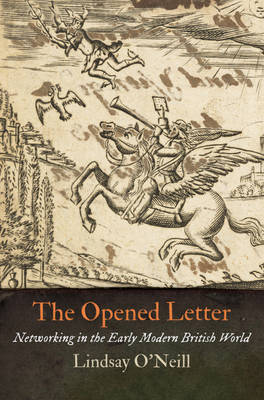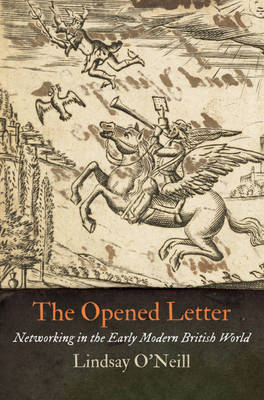
- Retrait gratuit dans votre magasin Club
- 7.000.000 titres dans notre catalogue
- Payer en toute sécurité
- Toujours un magasin près de chez vous
- Retrait gratuit dans votre magasin Club
- 7.000.0000 titres dans notre catalogue
- Payer en toute sécurité
- Toujours un magasin près de chez vous
Description
By the early eighteenth century, the rapid expansion of the British empire had created a technological problem: communication and networking became increasingly vital yet harder to maintain. As colonial possessions and populations grew and more individuals moved around the globe, Britons both at home and abroad required a constant and reliable means of communication to conduct business, plumb intellectual concerns, discuss family matters, run distant estates, and exchange news. As face-to-face communication became more intermittent, men and women across the early modern British world relied on letters.
In The Opened Letter, historian Lindsay O'Neill explores the importance and impact of networking via letter-writing among the members of the elite from England, Ireland, and the colonies. Combining extensive archival research with social network digital technology, The Opened Letter captures the dynamic associations that created a vibrant, expansive, and elaborate web of communication. The author examined more than 10,000 letters produced by such figures as Virginia planters William Byrd I and his son William Byrd II; the Anglo-Irish nobleman John Perceval; the newly minted Duke of Chandos, James Brydges, and his wife Cassandra Brydges; and Sir Hans Sloane, the president of the Royal Society, and his colleague Peter Collinson. She also mined letters from the likes of Nicholas Blundell, a Catholic member of the Lancashire gentry, and James Eliot, a London merchant and ardent Quaker. The Opened Letter reassembles and presents the vital individual and interlocking epistolary webs constructed by disparate groups of letter writers. These early social networks illuminate the structural, social, and geographic workings of the British world as the nation was becoming a dominant global power.Spécifications
Parties prenantes
- Auteur(s) :
- Editeur:
Contenu
- Nombre de pages :
- 272
- Langue:
- Anglais
- Collection :
Caractéristiques
- EAN:
- 9780812246483
- Date de parution :
- 02-10-14
- Format:
- Livre relié
- Format numérique:
- Genaaid
- Dimensions :
- 163 mm x 231 mm
- Poids :
- 589 g

Les avis
Nous publions uniquement les avis qui respectent les conditions requises. Consultez nos conditions pour les avis.






